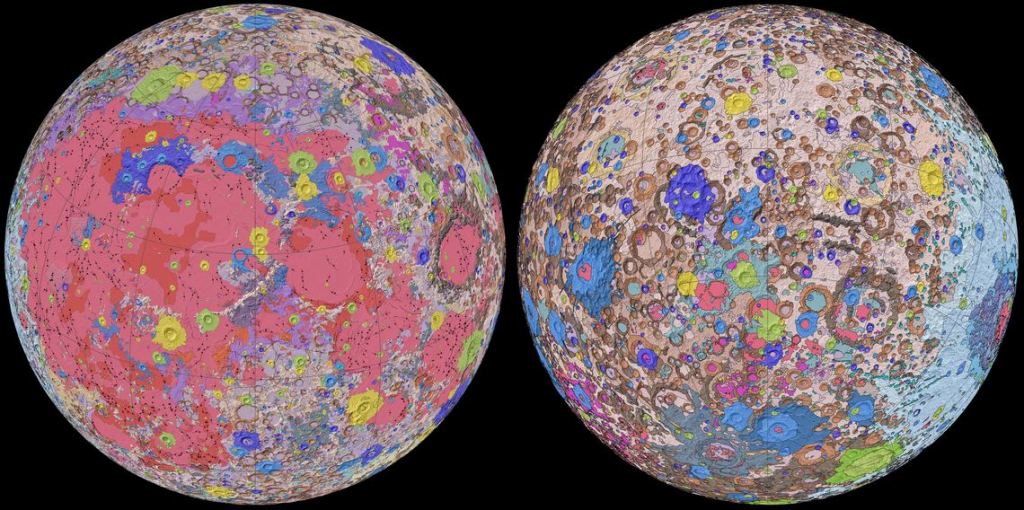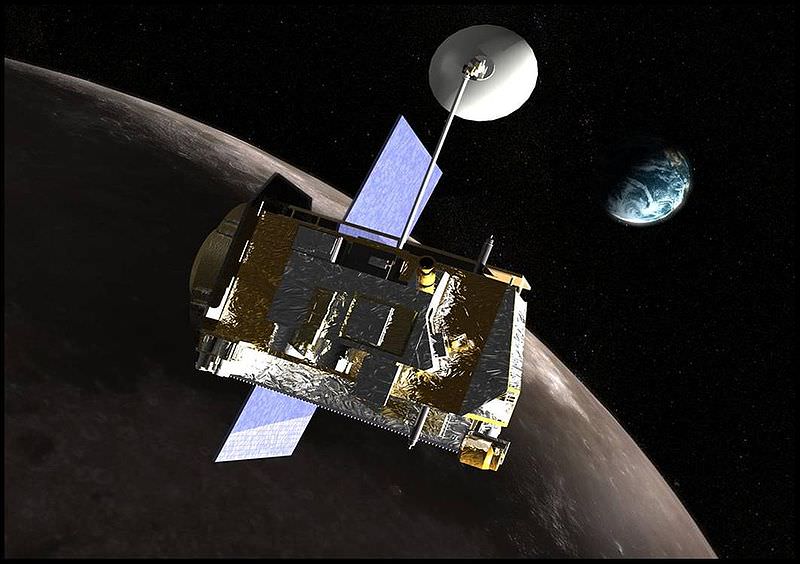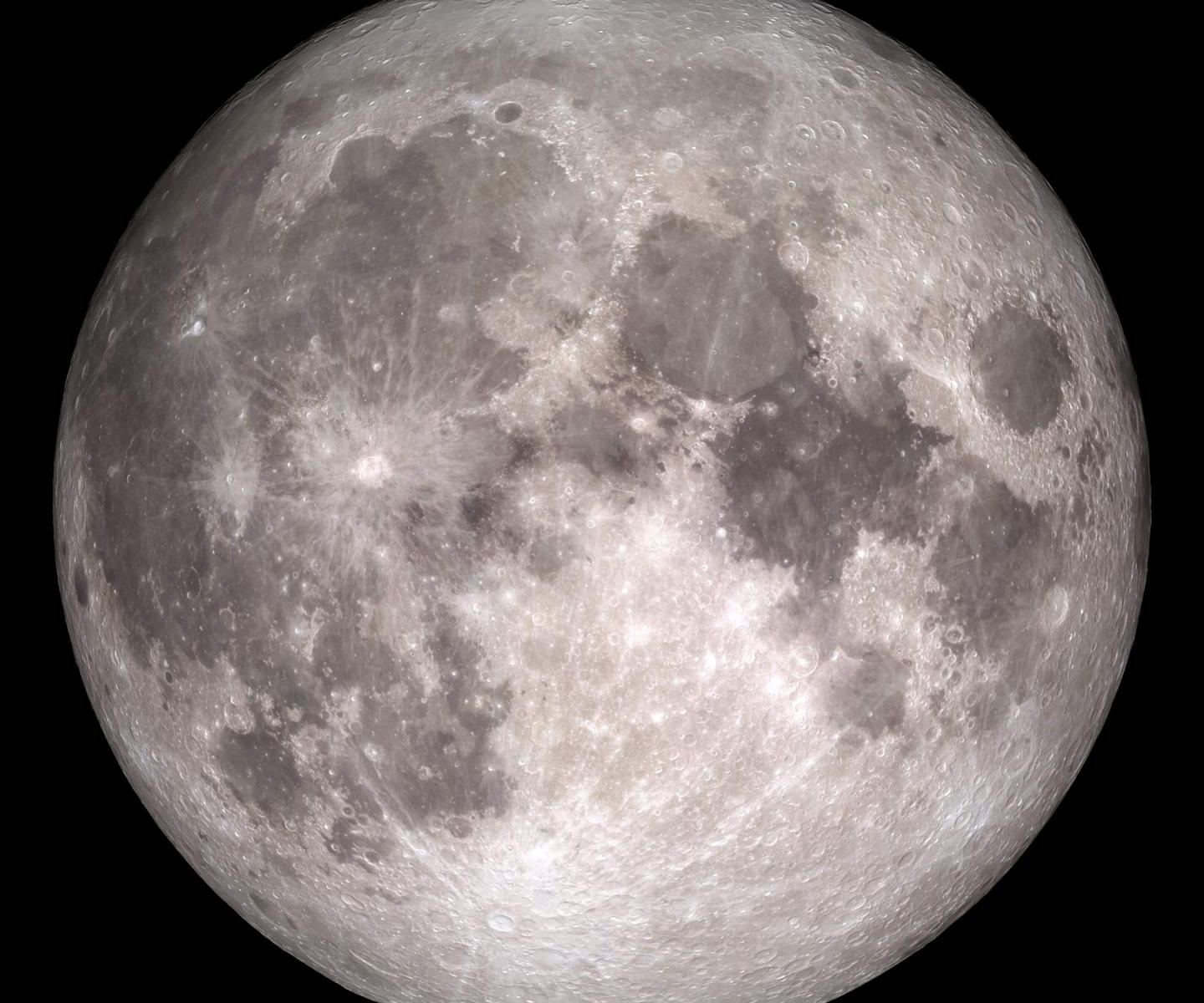A new study shows that the Moon is more metal-rich than previously thought. That has some far-reaching implications for our understanding of the Moon’s formation. If their results are solid, it means that we may need to re-think the giant impact hypothesis for the formation of the Moon.
A team of scientists using the Lunar Reconaissance Orbiter’s (LRO) Miniature Radio Frequency (Mini-RF) instrument were examining the bottom of lunar craters as part of the search for water ice. The location and accessibility of water on the Moon is a big part of our plans to have a human presence there. Not only could it be a source of drinking water, it’s also a source of hydrogen and oxygen, both critically useful elements.
The researchers were examining what they call “regolith fines” in the bottom of craters, which basically means very fine dust. They got different readings on the metal content in the fines, depending on the depth of the crater. Regolith fines in deeper craters showed more metal abundance than shallower craters.
That was a puzzle. Because if there’s more metal than we thought, then we need to re-think how the Moon formed.
The new study is titled “Bulk composition of regolith fines on lunar crater floors: Initial investigation by LRO/Mini-RF.” The lead author is Essam Heggy, coinvestigator of the Mini-RF experiments from the University of Southern California. The paper is published in the journal Science Direct.
“The LRO mission and its radar instrument continue to surprise us with new insights about the origins and complexity of our nearest neighbor,” said Wes Patterson, Mini-RF principal investigator from the Johns Hopkins Applied Physics Laboratory (APL) in Laurel, Maryland, and a study coauthor.

In this case, scientists were working on a better way to detect water ice that’s hidden from the Sun in the shaded floors of craters. When using radar to detect it, there are some uncertainties in the signals they receive. In a sense, they were trying to eliminate that uncertainty with a better understanding of the signals they get from the background regolith.
They found that there were variations in the dielectric signals based on crater size, depth, and on latitude. In their study they write “We find that the most plausible explanation for the observed variability of <the dielectric constant> of regolith fines on crater floors is mineralogical differences, suggesting an increase in metal abundance in the original excavated substrate with depth, i.e., in the uppermost kilometer of the lunar crust.”

Boil that statement down to plain English and it says that there is more metal than expected in lunar craters, and the larger and deeper those craters are, the more metal they found. That pattern only holds true down to a certain crater depth, though. Past a certain size, the amount of metal flattens. The metals in this case include iron and titanium, and the results suggest that there’s much more metal in the Moon’s upper crust than there should be, if our giant impact hypothesis is correct.
The giant impact hypothesis says that the young Earth was impacted by an ancient protoplanet about the size of Mars, named Theia. That happened about 4.5 billion years ago, and the impact blasted an enormous amount of molten rock into space. That material orbited the Earth and coalesced into the Moon. The hypothesis is well-supported by evidence, including the ratios of stable isotopes on both the Earth and the Moon.

There are some holes in the hypothesis, though. In the lunar highlands, as a press release points out, “rocks contain smaller amounts of metal-bearing minerals relative to Earth.” Now, if by the time of the impact with Theia the Earth had differentiated into its core, mantle, and crust, then the Moon would be metal-poor like in the highlands.
But the problem is, the entire Moon isn’t metal-poor. In the Moon’s maria, the large flat plains formed by volcanic eruptions, metal is more abundant than many rocks on Earth, and more abundant than in the highlands. What gives?
A lot of questions swirl around the whole issue. What was Theia’s composition? How did volatiles like water get trapped in the lunar basalts? And the titanium isotope ratios of both Earth and the Moon are nearly identical, indicating that none of Theia’s material made it into the Moon.
That’s where this research, and the team using the LRO’s Mini-RF, come into the story.

While tightening up their search for water, they were measuring the dielectric constant of the fine material in the craters. The dielectric constant is basically a measurement of a material’s ability to transmit an electric field, relative to the vacuum of space. A higher dielectric constant means more metal, specifically iron and titanium.
That’s when they noticed a puzzling pattern. As craters got larger, the constant rose. But it wasn’t linear. In craters 2 to 5 km wide (1 to 3 miles) the constant increased with the crater size. But for craters that were 5 to 20 km wide (3 to 12 miles), the dielectric constant remained stable.
“It was a surprising relationship that we had no reason to believe would exist,” said lead author Heggy in a press release.
“This exciting result from Mini-RF shows that even after 11 years in operation at the Moon, we are still making new discoveries about the ancient history of our nearest neighbor.”
Noah Petro, LRO Project Scientist
What does this pattern mean?
The team of researchers reasoned that the impact that created the larger craters excavated more metal-rich material from below the surface. That means that only the top-most few hundred meters of the Moon are poor in metals, while deeper materials are richer in metals. But that pattern only persists to a certain depth.
They went further in their work. They compared their Mini-RF images of crater floors with metal oxide maps, one from the LRO’s very own Wide-Angle Camera, and others from Japan’s Kaguya mission and NASA’s Lunar Prospector spacecraft. That data confirmed their findings: larger craters were richer in iron oxide and titanium oxide, and that material must’ve been excavated from deeper in the Moon.
“This exciting result from Mini-RF shows that even after 11 years in operation at the Moon, we are still making new discoveries about the ancient history of our nearest neighbor,” said Noah Petro, the LRO project scientist at NASA’s Goddard Space Flight Center in Greenbelt, Maryland. “The MINI-RF data is incredibly valuable for telling us about the properties of the lunar surface, but we use that data to infer what was happening over 4.5 billion years ago!”
This surprising insight into the Moon goes alongside other recent discoveries and insights. NASA’s GRAIL mission mapped the Moon’s gravity and discovered an anomaly in the South Pole Aitken Basin. A massive chunk of dense material is buried there, further evidence that the Moon’s structure is not uniform, and that denser materials can be spread throughout the subsurface. Then there’s the Moon’s KREEP terrane, a deposit of elements that are decaying radioactively and encouraged that part of the Moon to remain volcanic long after the rest of the Moon had cooled.

It all adds to the mystery of the Moon, and shows that as our knowledge of things grows, more questions come along for the ride.
“It really raises the question of what this means for our previous formation hypotheses,” Heggy said.
This new research means we’ll have to re-think the giant impact hypothesis, though the study itself doesn’t give us an answer for the question of the Moon’s origins.

In this study, the researchers only looked at craters in the Moon’s northern hemisphere. But the results have piqued their curiosity. They’ve already started looking at craters in the southern hemisphere to see if the same trend is apparent in that region.
If it is—and even if it isn’t, for that matter—the result might be the same: it’s time to re-examine the origins and history of the Moon.
More:
- Press Release: Radar Points to Moon Being More Metallic Than Researchers Thought
- Research Paper: Bulk composition of regolith fines on lunar crater floors: Initial investigation by LRO/Mini-RF
- Universe Today: This is What Moondust Looks Like When You Remove All the Oxygen. A Pile of Metal

